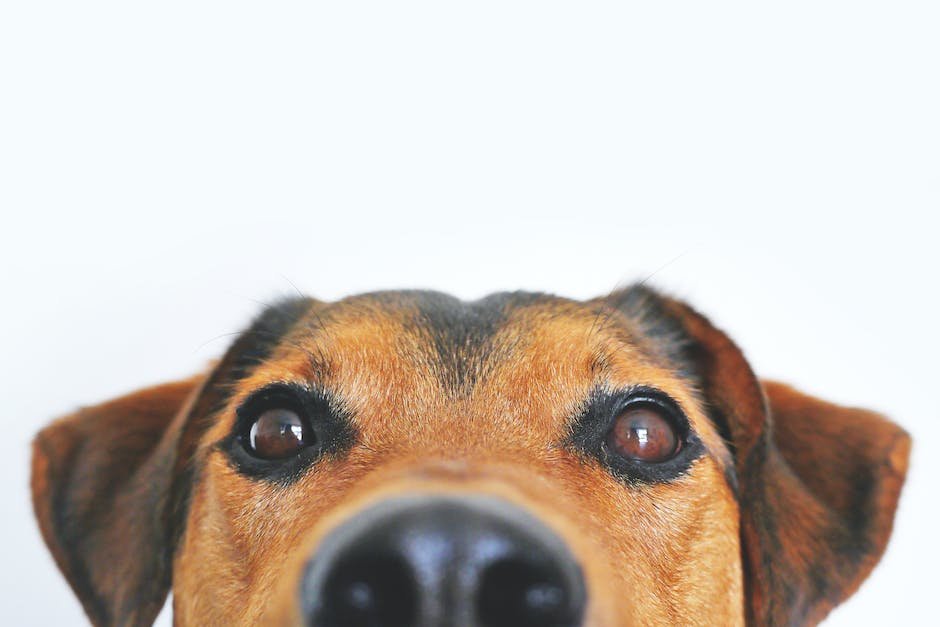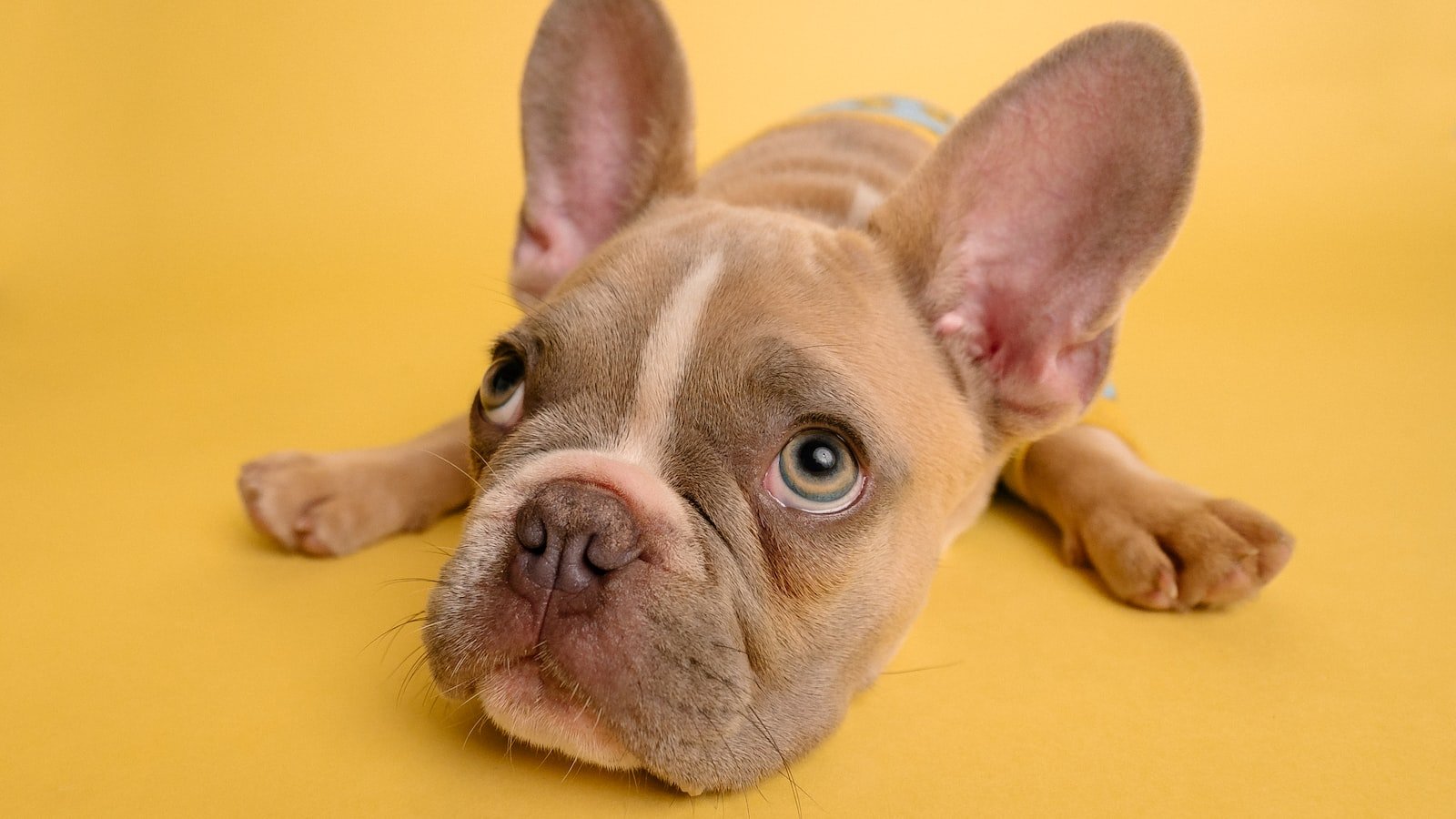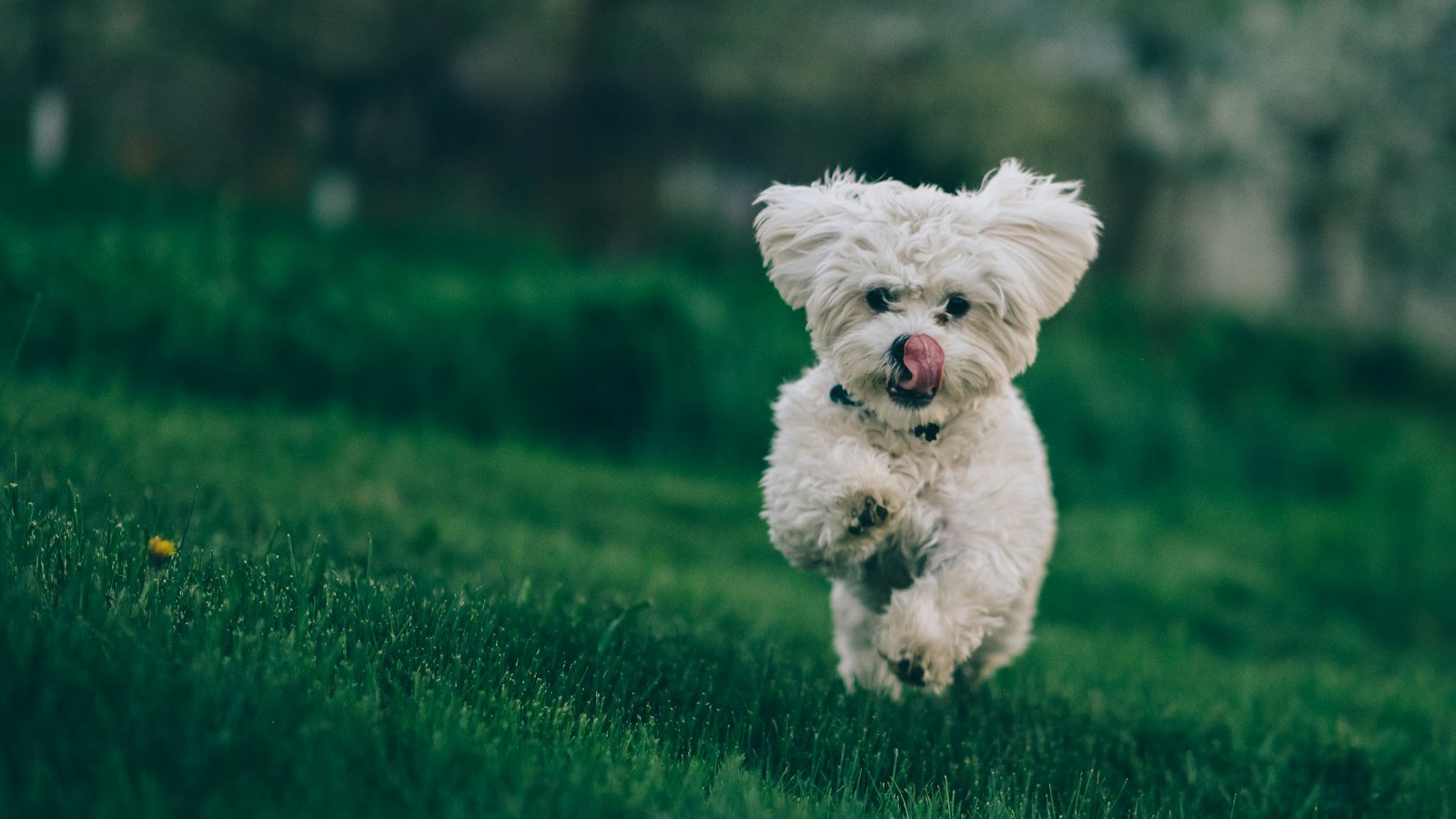Watch as colors dance across the canvas, strokes blending in harmony, and a masterpiece unfurling right before your eyes. Who says that creativity is exclusive to humans? In a world where dogs have trotted from being merely our furry companions to skilled therapy animals, search and rescue heroes, and even talented performers, it’s time to unlock their artistic potential. Teaching your dog to paint is an innovative way to nurture their creativity, stimulate their mind, and strengthen the bond between you. So grab some paintbrushes, dip into the wonderful palette of possibilities, and prepare to unleash a world of imagination. Let us embark on a colorful journey, diving deep into the process of teaching your loyal friend the art of painting.
Table of Contents
- Unleashing Your Dog’s Inner Artist: Teaching the Basics of Painting
- The Art of Choosing Dog-Friendly Painting Supplies
- Encouraging Your Dog’s Creativity: Step-by-Step Training Techniques
- Nurturing Your Dog’s Artistic Expression: Building Confidence and Inspiration
- Inspiring Masterpieces: Showcasing Your Dog’s Paintings with Pride
- Q&A
- Wrapping Up

Unleashing Your Dog’s Inner Artist: Teaching the Basics of Painting
Discover the hidden talents of your furry friend and embark on a creative journey together! Teaching your dog the basics of painting not only provides mental stimulation but also nurtures their artistic side. By tapping into their innate curiosity and love for exploration, you might be surprised at the masterpieces they can create.
Here are some tips to get you started:
- Introduce them to the tools: Let your dog become familiar with paintbrushes, canvases, and non-toxic paints. Using pet-friendly brushes with soft bristles will ensure their comfort during the artistic process.
- Choose their color palette: Dogs perceive colors differently from humans, and they may have preferences. Experiment with different hues and observe their reactions. Your pup might gravitate towards earthy tones or vibrant shades, allowing their unique style to shine through.
- Encourage paw-sonal expression: Instead of focusing on traditional brush techniques, guide your dog to explore their artistic instincts using their paws. Encourage them to playfully stamp their prints on the canvas, creating abstract patterns or even lifelike imprints of their furry paws.
- Make it a positive experience: Keep the painting sessions short and enjoyable, rewarding your dog with treats and enthusiastic praise. This positive reinforcement will ensure they look forward to their painting sessions and maintain a positive association with this creative endeavor.
Remember, the goal is not to create a masterpiece but to allow your furry companion to express themselves artistically. Embrace the joy of the process and cherish the unique art that your dog brings to life!

The Art of Choosing Dog-Friendly Painting Supplies
Dogs are not just furry companions; they are a part of our families and bring joy to our lives. So, why not include them in our artistic endeavors? When it comes to painting, it is crucial to choose dog-friendly supplies to ensure their safety and well-being. Here are some tips and recommendations to help you in the art of selecting the perfect painting supplies for a dog-friendly environment:
- Water-based paints and dyes: Opt for paints and dyes that are non-toxic and water-based. These are safer for dogs as they do not contain harmful solvents or chemicals that could be harmful if ingested or inhaled.
- Ventilation: When creating your masterpiece, make sure you have proper ventilation in the room. Opening windows or using fans will help prevent your furry friend from inhaling any harmful fumes.
- Avoid low VOC paints: While low VOC (volatile organic compounds) paints are considered less toxic for humans, they can still be harmful to our furry friends. To be on the safe side, choose paints that are specifically labeled as pet-friendly.
- Protective gear: Just as you would protect yourself, consider using protective gear for your dog as well. Doggy aprons or easily washable fabrics can help prevent paint splatters from getting on their fur or skin.
Remember, dogs are curious creatures and may find painting supplies tempting. Keep all bottles, tubes, and tools out of their reach to avoid any accidental ingestion or injuries. By following these guidelines, you can ensure a dog-friendly painting experience and create beautiful artwork while keeping your furry friend safe and happy.

Encouraging Your Dog’s Creativity: Step-by-Step Training Techniques
Unleashing your dog’s inner artist requires a combination of patience, consistency, and innovative training techniques. By tapping into their natural instincts and curiosity, you can help your furry companion develop their own unique creative abilities. Here are some step-by-step techniques to inspire your dog’s imagination:
- Brainstorming Sessions: Begin by creating a calm and relaxed environment for your dog. Engage in interactive play sessions that encourage their problem-solving skills. Use toys and puzzles that require them to think and find hidden treats. By incorporating brain games into their routine, you can stimulate their cognitive abilities and prompt creative thinking.
- Artistic Commands: Introduce new commands such as “paint” or “draw” to associate creative activities with specific cues. This can be as simple as teaching your dog to use their paw to hold a paintbrush or manipulate a touch-sensitive screen. Reinforce positive behavior by rewarding them with treats and praise when they exhibit artistic behavior during these training sessions.
- Exploring Different Mediums: Once your dog begins to grasp the concept of creativity, encourage them to explore various artistic mediums. Set up a designated “creativity zone” where they can experiment with paw printing, interactive toys, or even dog-friendly musical instruments. Allow them to express themselves freely, and reward their efforts to reinforce their artistic independence.
Remember, each dog has their own unique creative flair. By using these step-by-step training techniques, you can foster a creative spirit within your canine companion, allowing them to express themselves in delightful and surprising ways!

Nurturing Your Dog’s Artistic Expression: Building Confidence and Inspiration
Every dog possesses their own unique personality and talents, just waiting to be explored and nurtured. A wonderful way to tap into their hidden potential is by encouraging their artistic expression. Building confidence and inspiring their creative spirit can lead to a more fulfilled and happier furry friend. Here are a few tips to help you unlock your dog’s artistic prowess:
- Provide a creative space: Dedicate a designated area at home where your dog can freely express themselves. Whether it’s a corner with an easel and paints for the aspiring painter or a small stage for the doggie actor, a personalized creative space can make all the difference.
- Experiment with different mediums: Just like humans, dogs can have preferences when it comes to artistic mediums. Introduce them to various types of art, such as music, drawing, or even dance. Observe their reactions and determine which medium sparks their interest the most.
- Engage in collaborative activities: Encourage your dog to collaborate with you or other dogs in creative endeavors. Joint art projects like creating a mural together or participating in dog-friendly theater productions can foster a sense of teamwork, boost confidence, and inspire imagination.
- Attend dog art events and classes: Explore local art communities that provide training and workshops specifically tailored to canine artists. These events not only offer an opportunity for your dog to learn new techniques but also give them a chance to connect with fellow dog artists and draw inspiration from each other.
Remember, the key to nurturing your dog’s artistic expression lies in patience and encouragement. Allow them to explore at their own pace, celebrate their unique creations, and most importantly, have fun together in this exciting artistic journey!
Inspiring Masterpieces: Showcasing Your Dog’s Paintings with Pride
Calling all dog lovers and art enthusiasts! Get ready to be amazed and inspired as we delve into the world of canine creativity. From paw to canvas, our furry friends are unleashing their inner Picasso and producing remarkable masterpieces that will leave you in awe.
Imagine proudly showcasing your dog’s artistic talents to the world. These captivating paintings capture the essence of your beloved companion in a unique and expressive way. Each brushstroke reflects their personality, energy, and joy, creating a visual representation of their vibrant spirit.
Whether it’s a bold and colorful abstract or a delicate portrait capturing the soulful eyes of your four-legged friend, these canine creations ignite a spark in the viewer’s heart.
Why Display Your Dog’s Art?
Displaying your dog’s artwork serves as a testimony of their immense talent and individuality. It celebrates the bond you share, revealing the depth of their emotional connection to you and their world. Here are a few reasons why you should proudly exhibit their masterpieces:
- Unleashing creativity: Dogs, just like humans, possess an innate creative spirit. By showcasing their artwork, you encourage and nurture their artistic expression, providing them with an outlet for their unique perspective.
- Bridge between worlds: Art has the incredible power to transcend boundaries. Your dog’s paintings act as a bridge between the human and animal worlds, offering insights into their emotions and experiences that we may never fully understand.
- Inspiring conversation: Displaying your dog’s paintings sparks meaningful discussions with fellow art enthusiasts and fellow dog lovers alike. It ignites a sense of curiosity and intrigue, allowing you to share the story behind each stroke and color choice, fostering a connection with others.
Embrace the Journey
Embrace the journey of exploring your dog’s artistic abilities. Encourage them to immerse their paws into a world of colors and shapes, witnessing their growth and evolution as an artist. Together, you can embark on this creative adventure, each painting a testament to the love and joy that your canine companion brings into your life.
Q&A
How can I teach my dog to paint?
Teaching your dog to paint requires patience and positive reinforcement. Start by introducing your dog to non-toxic paints and teaching them to hold the paintbrush in their mouth. Gradually guide them towards creating simple brush strokes on a canvas, rewarding them with treats and praise along the way.
What type of paints should I use?
When teaching your dog to paint, it’s important to use non-toxic and pet-safe paints. Look for water-based paints that are free from harmful chemicals. These paints are safe for your dog to ingest in small quantities and easily wash off their paws.
What tools do I need to get started?
To start teaching your dog to paint, you will need dog-friendly paint, a canvas or paper, paintbrushes with soft bristles, and plenty of treats for positive reinforcement. Additionally, have a designated area where your dog can comfortably paint without making a mess in your home.
How do I encourage my dog’s creativity?
To encourage your dog’s creativity, allow them to explore different colors and textures. Offer them a variety of paintbrushes, sponges, or even their paws to experiment with different strokes. Remember, the goal is for your dog to have fun and express themselves through painting.
How can I train my dog to hold the paintbrush?
Start by introducing your dog to the paintbrush through positive reinforcement. Use treats to reward them for holding the brush in their mouth, gradually increasing the time they hold it. Over time, they will become more comfortable and confident using the paintbrush.
What if my dog is not interested in painting?
Not all dogs will have the same interest in painting, and that’s okay! Painting should be a fun and enjoyable activity for both you and your dog. If your dog doesn’t show enthusiasm, try finding other ways to stimulate their creativity, such as puzzle toys or interactive games.
Wrapping Up
As we bring this artistic journey to a close, we hope our guide has inspired you to venture into uncharted territory with your furry friend. Teaching your dog to paint goes beyond the mere strokes of a brush—it is a celebration of boundless creativity and the indescribable bond between a human and their four-legged companion.
Remember, as you embark on this artistic odyssey, patience and persistence are your allies. Discovering the hidden artistic talents of your furry Picasso will require dedication, but the rewards are immeasurable. As you both delve into the magical world of colors and patterns, brace yourself for a symphony of wagging tails, excited barks, and joyful leaps—an ensemble of creative freedom that transcends the boundaries of language and species.
Unleashing your dog’s creativity is not just about the final masterpiece—it’s about the process itself. Cherish the messy paws, the paint splatters, and the inevitable laughter that fills the room. Embrace the unpredictable brushstrokes, for they are a reflection of your dog’s unique personality and zest for life.
As the canvas becomes a testament to the shared bond between you and your canine companion, take a moment to pause and admire the paw prints of determination and courage scattered throughout. This journey may be unconventional, but the memories forged and the joy experienced are beyond compare.
So, dear reader, let us leave you with a paint-streaked smile on your face and a newfound appreciation for the artistry that lies within every wagging tail. Embrace the chaos, embrace the love, and embark on this colorful adventure together. Unleash your dog’s creative spirit, and watch as the world becomes a canvas upon which you both leave your unique paw prints of artistic brilliance.
As an affiliate, my content may feature links to products I personally use and recommend. By taking action, like subscribing or making a purchase, you’ll be supporting my work and fueling my taco cravings at the same time. Win-win, right?
Want to read more? Check out our Affiliate Disclosure page.